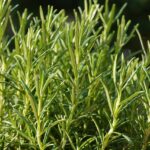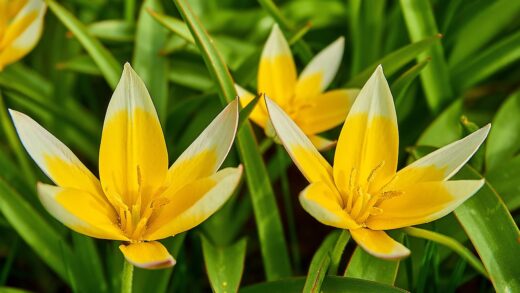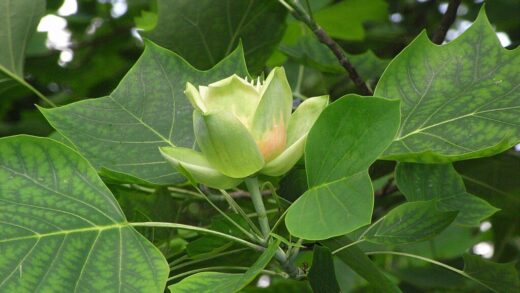The wintering of the Turk’s cap lily

Proper winter care is a crucial final step in the annual cycle of cultivating Turk’s cap lilies, ensuring their survival through the cold months and setting the stage for a vibrant return in the spring. Although Lilium martagon is a hardy species, native to regions with cold winters, providing some protection can be beneficial, especially for newly planted bulbs or in areas at the colder end of its hardiness range. The primary goals of wintering are to insulate the dormant bulbs from extreme temperature fluctuations, prevent them from becoming waterlogged, and protect them from winter pests. By taking a few simple steps in the autumn, a gardener can provide the security these elegant plants need to rest and recharge for the next growing season.
The process of preparing Turk’s cap lilies for winter begins long before the first frost arrives. The care provided throughout the post-flowering period in late summer and early autumn directly impacts the bulb’s ability to withstand winter conditions. Allowing the foliage to die back naturally is paramount, as this is the time when the bulb is actively storing the energy it will need to survive dormancy and fuel its initial growth in the spring. Prematurely cutting back the green foliage will result in a weaker bulb that is more vulnerable to winter damage.
Once the foliage has completely yellowed and withered, it should be cut back to just above ground level. This practice of “tidying up” is important for garden hygiene, as the dead stems and leaves can provide a sheltered place for pests, like slugs, and fungal spores to overwinter. Removing this debris reduces the likelihood of having disease and pest problems in the following spring. This simple act of cleaning the garden bed is an easy and effective part of an integrated pest and disease management strategy.
The timing of these preparations is important. The foliage should be left in place for as long as it is green and actively photosynthesizing. The final cutback and application of winter mulch should ideally be done after the first light frosts have occurred but before the ground freezes solid. This timing ensures that the plant has completed its energy storage process and is fully entering its dormant state. Acting too early can interfere with the plant’s natural preparation for winter.
Importance of mulching
Applying a layer of winter mulch is one of the most beneficial actions a gardener can take to protect Turk’s cap lilies during the winter. The primary purpose of this mulch is not to keep the ground warm, but rather to keep it consistently cold and frozen. It acts as an insulating blanket, shielding the soil from the cycles of freezing and thawing that can occur during sunny winter days and cold nights. These freeze-thaw cycles can heave the soil, potentially damaging the lily’s roots and even pushing the bulbs closer to the surface where they are more vulnerable.
More articles on this topic
The mulch layer should be applied after the ground has frozen lightly. Applying it too early, when the soil is still warm, can trap heat and moisture, which may encourage the bulb to rot or attract rodents seeking a warm place to nest for the winter. A layer of 10 to 15 centimeters of loose, airy organic material is ideal. Excellent choices for winter mulch include shredded leaves, straw, pine needles, or chopped-up cornstalks. These materials provide good insulation without becoming overly compacted and waterlogged.
This insulating layer helps to protect the dormant bulb from sudden, extreme drops in temperature that could potentially cause damage. While Turk’s cap lilies are hardy, this extra layer of protection can make a significant difference, especially for bulbs that were planted in the same autumn and have not yet had a full season to become deeply established. It provides an added measure of security against a particularly harsh or unpredictable winter.
In the spring, it is important to remove the winter mulch in a timely manner. As the threat of hard freezes passes and the soil begins to warm, the mulch should be gradually raked away from the area where the lilies are planted. This allows the sunlight to reach and warm the soil, which encourages the lily shoots to emerge. Leaving the heavy winter mulch in place for too long can delay the emergence of the new growth and can create a damp environment that is conducive to slugs and fungal diseases.
Ensuring proper drainage
Excellent drainage is crucial for Turk’s cap lilies throughout the year, but it becomes even more critical during the winter months. Dormant lily bulbs are highly susceptible to rot if they are forced to sit in cold, waterlogged soil. In many climates, winter is a period of high precipitation, either as rain or melting snow, and soil that does not drain freely can quickly become saturated. This combination of cold and wet is one of the biggest threats to the survival of the bulbs.
More articles on this topic
The work to ensure good winter drainage is actually done during the initial planting and bed preparation. By selecting a naturally well-drained site and amending the soil with copious amounts of organic matter, the gardener creates a soil structure that allows excess water to move away from the bulbs. For gardens with inherently heavy clay soil, planting in raised beds is often the most reliable way to guarantee that the lily’s roots will not be sitting in water during the winter.
It is also important to avoid planting Turk’s cap lilies in low-lying areas of the garden where water naturally collects. Even in a well-amended bed, if the surrounding topography directs water to that spot, the soil can remain saturated for extended periods. Observing the garden’s drainage patterns after a heavy rain can provide valuable clues about which areas are suitable for planting these drainage-sensitive lilies.
During the autumn cleanup, it is also wise to ensure that the area around the lilies is clear of any debris that could impede drainage. A thick mat of fallen leaves, for example, can become compacted over the winter and trap moisture against the soil surface. While a loose layer of shredded leaves makes an excellent mulch, a dense, wet blanket of whole leaves can be detrimental. Maintaining clear drainage pathways away from the lily bed is a simple but important step in winter preparation.
Winter protection in containers
Growing Turk’s cap lilies in containers is a viable option, especially for gardeners with limited space or unsuitable soil. However, plants in containers are much more exposed to the cold than those in the ground, as the soil in a pot will freeze much faster and more deeply than the soil in the garden. Therefore, container-grown lilies require specific winter protection to ensure the survival of the bulbs.
One of the most effective methods for protecting container-grown lilies is to move the pot to a sheltered location for the winter. An unheated garage, a cold basement, or a protected shed are all excellent options. The goal is to keep the pot in a location where the temperature will remain consistently cold but will not drop to the extreme lows experienced outdoors. This protects the bulb from the damaging effects of repeated hard freezes.
If moving the container is not feasible, the pot itself can be insulated. This can be done by wrapping the pot in several layers of burlap or bubble wrap. Another method is to create a temporary “cage” of chicken wire around the pot and fill the space between the cage and the pot with insulating material like straw or shredded leaves. The container can also be “plunged” into a vacant spot in a garden bed, using the surrounding soil to provide insulation.
Throughout the winter, the soil in the container should be kept just barely moist, but never wet. It will require very infrequent watering, perhaps only once a month, just to prevent the bulb from completely desiccating. In the early spring, as temperatures begin to rise, the pot can be moved back to its growing location or the insulation can be removed. This careful overwintering will allow the containerized lily to emerge healthy and ready for another season of growth.
Preventing winter pest damage
Dormant lily bulbs can be an attractive food source for various rodents during the winter when other food is scarce. Voles, mice, and squirrels can all cause significant damage by tunneling through the soil and feasting on the nutritious bulbs. This type of damage often goes unnoticed until the spring when the lily fails to appear, which can be a source of great disappointment for the gardener.
Preventative measures taken at the time of planting are the most effective way to protect bulbs from rodent damage. As mentioned previously, planting the bulbs inside a cage made of hardware cloth or wire mesh provides a physical barrier that the rodents cannot penetrate. The mesh should be fine enough to prevent small animals from squeezing through. This method provides the most reliable long-term protection against underground pests.
Incorporating sharp, abrasive materials into the planting hole and the surrounding backfill can also act as a deterrent. Materials like coarse sand, sharp gravel, or crushed oyster shells are uncomfortable for rodents to tunnel through and can encourage them to seek an easier meal elsewhere. While not as foolproof as a wire cage, this method can be effective, especially when combined with other deterrent strategies.
Maintaining a clean garden area can also help to reduce rodent pressure. Removing brush piles, tall grass, and heavy weed cover near the lily beds eliminates the hiding places where rodents often live and build their nests. By making the area less hospitable, the gardener can encourage these pests to move to other locations. For persistent problems, an appropriately baited and placed trap can be used as a last resort, but preventative and deterrent methods are always the preferred first line of defense.


















